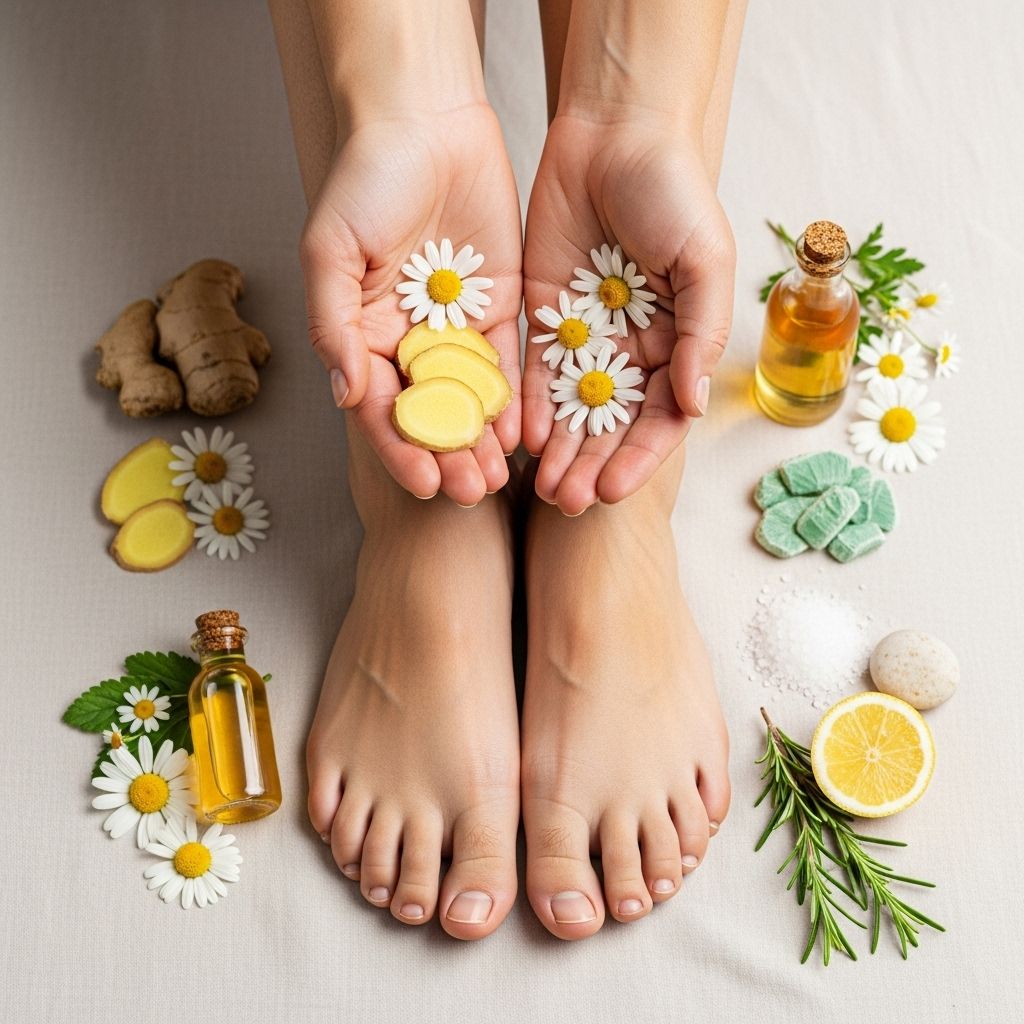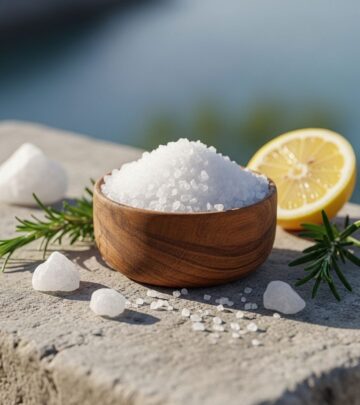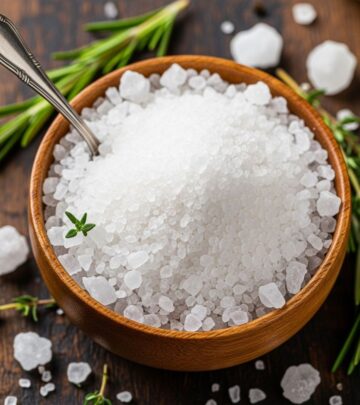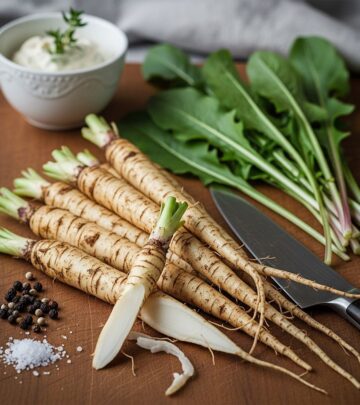8 Effective Home Remedies for Tingling Hands and Feet
Natural methods offer soothing relief for restless nerves and creeping sensations.

Tingling, also known as paraesthesia, is a common sensation that may affect your hands, feet, arms, or legs. You may describe it as pins and needles, numbness, or a crawling feeling under the skin. Although often harmless and short-lived, persistent tingling can be uncomfortable and signal underlying issues such as nerve compression, circulation problems, or nutrient deficiencies. Exploring safe and natural remedies is important for both relief and prevention. This comprehensive guide covers eight proven home remedies, practical lifestyle changes, and frequently asked questions regarding tingling sensations in the extremities.
What Causes Tingling in Hands and Feet?
Before trying any home remedy, it’s vital to understand what might be causing your symptoms. Tingling sensations can be triggered by:
- Poor circulation: Often from sitting or sleeping in one position for too long.
- Nerve compression: Due to injury, repetitive motion, or certain medical conditions.
- Nutrient deficiencies: Especially low levels of B vitamins, magnesium, or vitamin E.
- Medical conditions: Diabetes, carpal tunnel syndrome, neuropathy, infections, or multiple sclerosis.
- Temporary factors: Anxiety or hyperventilation.
Home Remedies to Relieve Tingling Sensations
The following home remedies blend traditional wisdom with scientific support. They are designed to relieve mild, occasional tingling. Always consult a healthcare provider if you have frequent, severe, or persistent symptoms.
1. Essential Oils
Essential oils, such as lavender and peppermint oil, are renowned for their anti-inflammatory and pain-relieving properties. When applied topically, they may soothe irritated nerves and reduce the discomfort associated with tingling.
- How to Use: Mix 8-10 drops of lavender or peppermint oil with 1-2 tablespoons of a carrier oil such as coconut or olive oil. Gently massage into affected areas and leave overnight for best results.
- Benefits: Calms nerves, reduces swelling, and helps improve circulation.
- Frequency: Once daily or as needed.
2. Massage Therapy
Massage stimulates nerve endings and increases blood flow, which can help reduce the frequency and intensity of tingling sensations.
- How to Use: Use your fingers to apply gentle, circular motions to the affected area. For hard-to-reach spots, a foam roller or the help of a partner can be beneficial. Pair with deep breathing to enhance relaxation.
- Benefits: Promotes nerve repair and tension relief.
- Frequency: 2-3 times daily or as required.
3. Apple Cider Vinegar (ACV)
Apple cider vinegar contains acetic acid, offers potent anti-inflammatory properties, and is a good source of nutrients essential for nerve health. It may assist in repairing irritated nerves and supporting faster recovery.
- How to Use: Stir 1 tablespoon of apple cider vinegar into a glass of warm water. Add a little honey for taste and drink once a day.
- Cautions: ACV can interact with certain medications (such as diuretics and diabetes drugs) and may cause allergic reactions in sensitive individuals. Always dilute it and consult your doctor if you are on medication or have chronic health concerns.
- Frequency: Once daily.
4. Warm Compress
Applying warmth increases local blood circulation, which supplies the nerves with nutrients and oxygen, potentially reducing tingling and discomfort. Warm compresses are also soothing for tension and mild pain.
- How to Use: Place a warm, moist towel or commercially available heating pad over the affected area for 5-7 minutes. Repeat this process 2-3 times per session.
- Benefits: Improves circulation and delivers immediate soothing effects.
- Cautions: Avoid prolonged use to prevent skin burns or irritation. Do not use on areas with numbness without checking temperature to avoid injury.
- Frequency: 2-3 times daily.
5. Ginkgo Biloba Herbal Tea
Ginkgo biloba, a popular herbal remedy in traditional medicine, is believed to improve circulation and possess anti-inflammatory effects. As a tea, it may help repair peripheral nerve damage and ease tingling sensations.
- How to Use: Add 1-2 teaspoons of dried ginkgo biloba leaves to a cup of water, bring to a boil, simmer for 5 minutes, and strain. Sweeten with honey if desired and drink warm.
- Cautions: Ginkgo can interact with several medications, including antidepressants, anticoagulants, and diabetes drugs. Side effects may include headache, digestive upset, and allergic reactions in rare cases. Speak to your healthcare provider before use if you take prescription medications.
- Frequency: 2-3 times daily.
6. Epsom Salt Soak
Rich in magnesium, Epsom salt baths can help reduce inflammation and soothe irritated nerves. Magnesium absorption through the skin may contribute to nerve function and muscular relaxation.
- How to Use: Dissolve 1 cup of Epsom salt in a bathtub filled with comfortably warm water. Soak affected limbs for 20-30 minutes.
- Cautions: Test water temperature before immersing to avoid burns. Prolonged soaking may irritate sensitive skin. Not recommended for open wounds.
- Frequency: Once daily or as needed.
7. Cinnamon
Cinnamon is believed to promote blood circulation and contains antioxidants that may support nerve health. It is a warming spice used traditionally for managing poor circulation and nerve discomfort.
- How to Use: Mix 1/2 teaspoon of cinnamon powder into a glass of warm milk or water and drink once daily. Alternatively, it can be added to herbal teas or as a spice in cooking.
- Cautions: Excessive cinnamon intake can affect liver health. Use only in moderate amounts, and avoid if you have liver disease or allergies.
- Frequency: Once daily.
8. Yogurt
Yogurt is rich in essential B vitamins and minerals, such as calcium and magnesium, that are crucial for healthy nerve function. Consuming yogurt may help restore nutrient deficiencies often linked to tingling sensations.
- How to Use: Include a bowl of plain yogurt in your daily diet as a nutritious snack or with meals.
- Benefits: Supports nerve repair and overall well-being through balanced nutrition.
- Frequency: Once or twice daily.
Lifestyle Tips to Prevent and Reduce Tingling
- Stretch regularly: Simple movements, such as rotating wrists, flexing fingers, rolling shoulders, or performing ankle circles, promote better blood flow and prevent nerve compression during sedentary activities.
- Elevate limbs: Raising affected hands or legs can reduce swelling and encourage better circulation.
- Stay hydrated: Drink adequate water daily, as dehydration can worsen nerve discomfort.
- Maintain a balanced diet: Focus on foods rich in B vitamins, magnesium, and antioxidants.
- Avoid repetitive motions: Take regular breaks if your daily routine or job involves repetitive hand or foot movements.
Additional Natural Supplements and Herbal Remedies
| Supplement/Herb | Benefit | Notes |
|---|---|---|
| Vitamin B12 | Supports nerve repair | Essential for vegetarians and older adults; consult your doctor before supplementing. |
| Vitamin E | Antioxidant, improves circulation | Deficiency linked to neurological symptoms; found in nuts and seeds. |
| Turmeric | Reduces inflammation | May be consumed as a tea or added to food. |
| Black cumin | Anti-inflammatory properties | Consult your doctor before use, especially with chronic conditions. |
When to Seek Medical Advice
- The tingling sensation is frequent, severe, or worsening over time.
- You experience numbness, weakness, pain, or loss of movement along with tingling.
- There is an underlying condition like diabetes, multiple sclerosis, or a recent injury.
- Home remedies provide no relief or symptoms interfere with daily life.
Frequently Asked Questions (FAQs)
What is the difference between tingling and numbness?
Tingling refers to a pins-and-needles sensation commonly felt in extremities, while numbness is a loss or reduction of sensation. Both can result from poor circulation, nerve compression, or underlying medical issues.
Are home remedies safe for everyone?
Most home remedies are safe for mild, occasional tingling in otherwise healthy individuals. However, some (such as ginkgo biloba, ACV, or essential oils) may interact with medications or cause allergic reactions. Always consult your healthcare provider before starting any new remedy, especially if you have chronic health conditions.
How long does it take for these remedies to work?
Relief can be immediate for circulation-boosting remedies like massage, stretching, or warm compresses. Nutritional approaches, such as regular intake of yogurt or vitamin-rich foods, may take several days to weeks to show lasting benefits.
Can I use more than one home remedy at the same time?
Yes, it is often safe to combine dietary changes, stretching, and topical remedies. However, be mindful not to overuse any one treatment (like essential oils or cinnamon) to avoid side effects.
When should I avoid home remedies and see a doctor instead?
If tingling is persistent, worsening, accompanied by pain, weakness, or occurs after an injury, seek prompt medical attention to rule out serious underlying causes.
Key Takeaways
- Occasional tingling in hands and feet is commonly due to temporary nerve compression or poor circulation and often responds well to home remedies.
- Essential oils, massage, apple cider vinegar, warm compresses, herbal teas, Epsom salt baths, cinnamon, and yogurt are natural options for relief and nerve support.
- Persistent or worsening symptoms necessitate medical evaluation to identify and address underlying health issues.
References
- https://www.stylecraze.com/articles/effective-home-remedies-to-treat-tingling-sensation/
- https://www.kifyhospital.com/post/numbness-and-tingling-natural-home-remedies
- https://www.youtube.com/watch?v=ivwlCQKSCAk
- https://www.stylecraze.com/articles/home-remedies-for-carpal-tunnel/
- https://www.atlasobscura.com/articles/tongue-tingling-spices
- https://dk.pinterest.com/pin/746471707027175888/
- https://www.gainesville.com/story/news/2013/10/29/herbal-relief-for-nerve-pain/31855195007/
- https://www.nchfa.com/sites/default/files/webform/homeownership_impact_2024/_sid_/1318c4b5-6405_o3syyka2x3g-c66e-c06c.html
- https://handandwristinstitute.com/blog/pinched-nerve-heres-7-home-remedies-to-help-reduce-some-pain/
Read full bio of Sneha Tete












